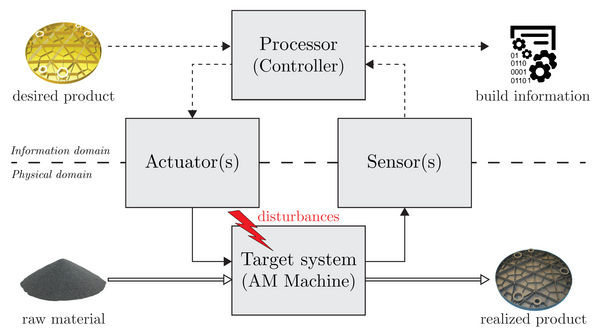Researcher in the Spotlight: Thomas Hafkamp
I’m developing novel closed-loop control systems for additive manufacturing
My name is Thomas Hafkamp. Within the Control Systems Technology group of the Department of Mechanical Engineering, I’m developing novel closed-loop control systems for additive manufacturing – better known as 3D printing. More specifically, my research focuses on vat photopolymerization or stereolithography, which solidifies layers of photocurable resin using a UV light source and builds up products layer by layer. Most 3D printers do not rely on sensor data to correct for perturbations, operating in a so-called open loop. My task is to investigate the extent to which we can give 3D printers ‘eyes and ears’ and how we can use data to improve printed part quality using control systems.
A vision of consistency

In 2016, HTSC defined three PhD projects on photopolymerization-based 3D printing. Steyn Westbeek works on the multi-physical modeling of mechanical property build-up during 3D printing and Andrei Kozhevnikov models fluid dynamics in the material deposition step. Our collaboration consists of joint research projects (such as supervising MSc students), co-location and experiments using the AMSYSTEMS research platform.
From an application point of view, the main challenge is inconsistent quality. You cannot press ‘CTRL+P’ and have a defect-free product roll out the 3D printer. By adding closed-loop/feedback control systems to safeguard the printing process, we hope to contribute significantly to the dream of first-time-right 3D prints. From a research point of view, the main challenge is measuring the cure state (the extent to which the liquid photopolymer has solidified). Machine-implementable sensors for the cure state are not readily available, which motivated me to develop such a sensor myself.
THE PROOF-OF-CONCEPT
My approach involved a thorough literature review of sensor and actuator candidates, process modeling possibilities and (closed-loop) control opportunities. Future incorporation of these mechatronic system elements into the existing 3D printer architecture required an implementation feasibility assessment, for which I systematically went through all steps of control system development. Photopolymerization-based 3D printing consists of two major process steps: material deposition and material transformation. To position potential control strategies in the academic research field, I developed a classification scheme based on the Systems Engineering V-model. I categorized real-time control of photopolymerization as an area where a lot can be gained from the transition to closed-loop control.

For certain 3D printer configurations, real-time photopolymerization control turned out to be feasible. To further prove this, I developed an experimental set-up at the TNO Materials Solutions lab. This consisted of an infrared spectrometer acting as a sensor, a UV LED actuator and an embedded controller with self-developed software to allow real-time data communication. The experimental results proved the principle of real-time feedback control for the conversion of liquid monomer to solid photopolymer. A new sensor concept is therefore being developed for future integration into 3D printers.
THE NEXT BIG THING
This research lies at the heart of multiple manufacturing technologies. Photopolymerization is not only used in 3D printing but also for coatings, dental fillings, gluing and more; better control makes it possible to increase the quality, yield and productivity of these. Today’s automation uses closed-loop motion control, so applying the same closed-loop approaches to photopolymerization-based manufacturing processes may be a major step forward.